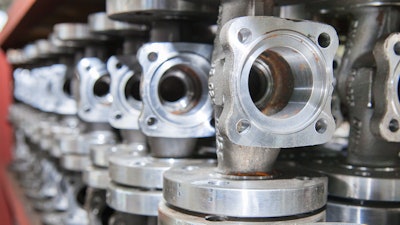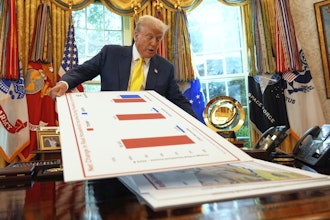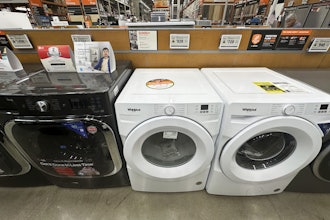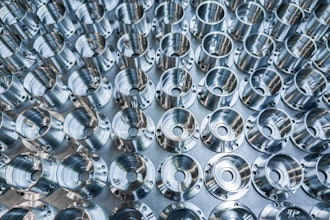
TEMPE, Ariz. — Economic activity in the manufacturing sector contracted in June for the fourth consecutive month, following a two-month expansion preceded by 26 straight months of contraction, say the nation's supply executives in the latest Manufacturing ISM Report On Business.
The report was issued today by Susan Spence, MBA, Chair of the Institute for Supply Management Manufacturing Business Survey Committee:
"The Manufacturing PMI registered 49 percent in June, a 0.5-percentage point increase compared to the 48.5 percent recorded in May. The overall economy continued in expansion for the 62nd month after one month of contraction in April 2020. (A Manufacturing PMI above 42.3 percent, over a period of time, generally indicates an expansion of the overall economy.) The New Orders Index contracted for the fifth month in a row following a three-month period of expansion; the figure of 46.4 percent is 1.2 percentage points lower than the 47.6 percent recorded in May. The June reading of the Production Index (50.3 percent) is 4.9 percentage points higher than May's figure of 45.4, returning the index to expansion territory. The Prices Index remained in expansion (or 'increasing') territory, registering 69.7 percent, up 0.3 percentage point compared to the reading of 69.4 percent reported in May. The Backlog of Orders Index registered 44.3 percent, down 2.8 percentage points compared to the 47.1 percent recorded in May. The Employment Index registered 45 percent, down 1.8 percentage points from May's figure of 46.8 percent.
"The Supplier Deliveries Index indicated slower delivery performance, though the pace picked up somewhat: The reading of 54.2 percent is down 1.9 percentage points from the 56.1 percent recorded in May. (Supplier Deliveries is the only ISM Report On Business index that is inversed; a reading of above 50 percent indicates slower deliveries, which is typical as the economy improves and customer demand increases.) The Inventories Index registered 49.2 percent, up 2.5 percentage points compared to May's reading of 46.7 percent.
"The New Export Orders Index reading of 46.3 percent is 6.2 percentage points higher than the reading of 40.1 percent registered in May. The Imports Index gained back its loss from the previous month, registering 47.4 percent, 7.5 percentage points higher than May's reading of 39.9 percent.
"In June, U.S. manufacturing activity slowed its rate of contraction, with improvements in inventories and production the biggest factors in the 0.5 percentage point gain in the Manufacturing PMI.
"The demand indicators remain mixed, with the New Orders and Backlog of Orders indexes contracting at faster rates, while the Customers' Inventories and New Export Orders indexes contracted at slower rates. A 'too low' status for the Customers' Inventories Index is usually considered positive for future production.
"Regarding output, the Production Index increased month over month and is now in expansion territory, however; the Employment Index dropped further into contraction as managing head count is still the norm, as opposed to hiring. The mixed indicators in output suggest companies still being cautious in their hiring even with an increase in production.
"Finally, inputs are defined as supplier deliveries, inventories, prices and imports. The Inventories Index remains in contraction territory (though at a slower rate compared to May) after expanding in April, as companies completed pull-forward activity ahead of tariffs. The Supplier Deliveries Index indicated slower deliveries but improved performance, indicating that the delays in clearing goods through ports of entry are largely complete. Tariffs-induced prices growth accelerated, while the Imports Index remained in contraction but regained the ground it lost the previous month.
"Looking at the manufacturing economy, 46 percent of the sector's gross domestic product (GDP) contracted in June, down from 57 percent in May; however, 25 percent of GDP is strongly contracting (registering a composite PMI® of 45 percent or lower), up from 5 percent in May. The share of sector GDP with a PMI at or below 45 percent is a good metric to gauge overall manufacturing weakness. Of the six largest manufacturing industries, four (Petroleum & Coal Products; Computer & Electronic Products; Machinery; and Food, Beverage & Tobacco Products) expanded in June, compared to two in May."
The nine manufacturing industries reporting growth in June — listed in order — are: Apparel, Leather & Allied Products; Petroleum & Coal Products; Nonmetallic Mineral Products; Miscellaneous Manufacturing; Furniture & Related Products; Computer & Electronic Products; Machinery; Food, Beverage & Tobacco Products; and Electrical Equipment, Appliances & Components. The six industries reporting contraction in June — in the following order — are: Textile Mills; Wood Products; Paper Products; Chemical Products; Transportation Equipment; and Fabricated Metal Products.
WHAT RESPONDENTS ARE SAYING
- "Business has notably slowed in last four to six weeks. Customers do not want to make commitments in the wake of massive tariff uncertainty." [Fabricated Metal Products]
- "Middle East unrest as well as unstable long-term tariff positions continue to impact second- and third-tier sources, which is applying pressure to material costs. Costs are up 6 percent to 10 percent over budgeted inflation — and the forecast accounted for the volatility expected with the current administration." [Wood Products]
- "The biopharmaceutical space is starting to see more pronounced headwinds: Stock prices have significantly eroded, companies are facing hiring freezes, and so on." [Chemical Products]
- "The tariff mess has utterly stopped sales globally and domestically. Everyone is on pause. Orders have collapsed." [Machinery]
- "Tariff volatility has impacted machinery, steel and specialized components. Also, potential shortages of skilled labor for construction, maintenance and installation." [Food, Beverage & Tobacco Products]
- "Tariffs continue to cause confusion and uncertainty for long-term procurement decisions. The situation remains too volatile to firmly put such plans into place." [Computer & Electronic Products]
- "Tariffs continue to impact material pricing." [Petroleum & Coal Products]
- "Tariffs, chaos, sluggish economy, rising prices, Ukraine, Iran, geopolitical unrest around the world — all make for a landscape that is hellacious, and fatigue is setting in due to dealing with these issues across the spectrum. Unfortunately, this is just the beginning unless something drastically changes, but the supply chain implications will grow — depots will not be stocked, less material will be available, and it will take years for domestic production to handle the needs (if companies even want to)." [Primary Metals]
- "The geopolitical environment remains volatile: (1) ongoing shifts in U.S. tariff policy make it difficult to plan, (2) emerging conflicts in the Middle East could pose long-term commodity risks and (3) China measures on rare earth materials are causing challenges. Overall outlook for our company is positive; it's just extremely hard to make near-term supply plans/strategies or budgets." [Miscellaneous Manufacturing]
- "The word that best describes the current market outlook is 'uncertainty.' The erratic trade policy with on-again/off-again tariffs has led to price uncertainty for customers, who appear to be prepared to hold off large capital purchases until stability returns. This has resulted in further reductions in customer demand and softening sales for the balance of 2025. Operations has planned additional weeks of downtime at multiple plants to accommodate reduced orders. Next year's forecast is not any better at this point. Additionally, most electric vehicle (EV) projects have been delayed or canceled, resulting in a significant amount of unutilized capital investment. EV technology launches for 2026-28 have been delayed past 2030." [Transportation Equipment]






















